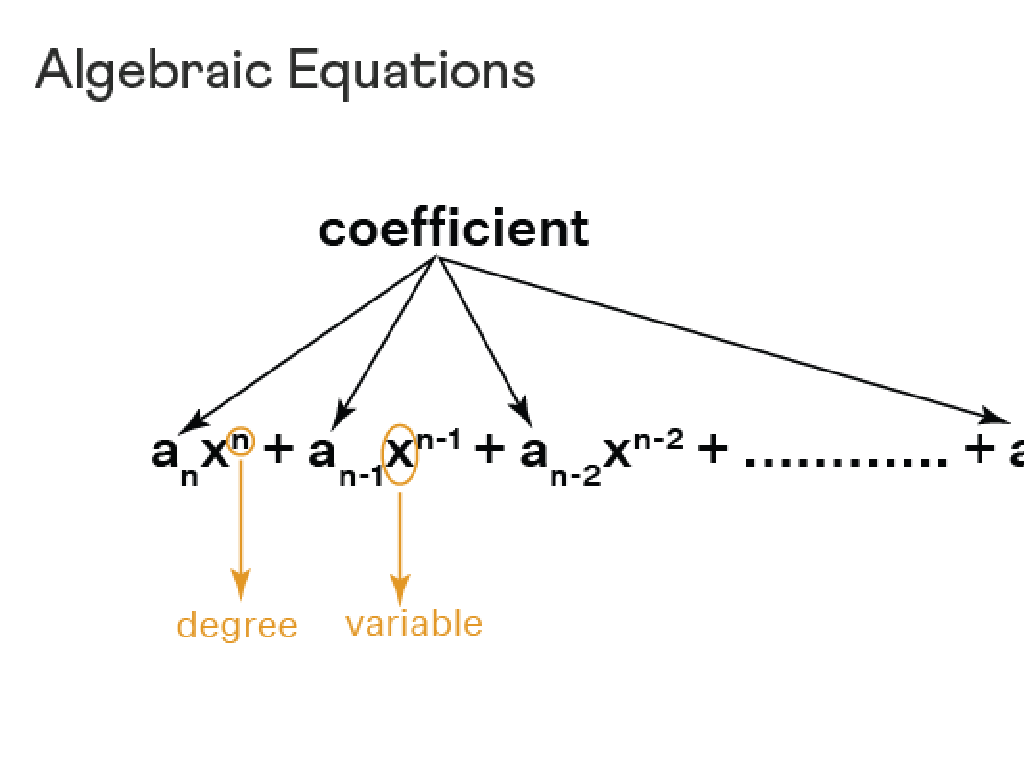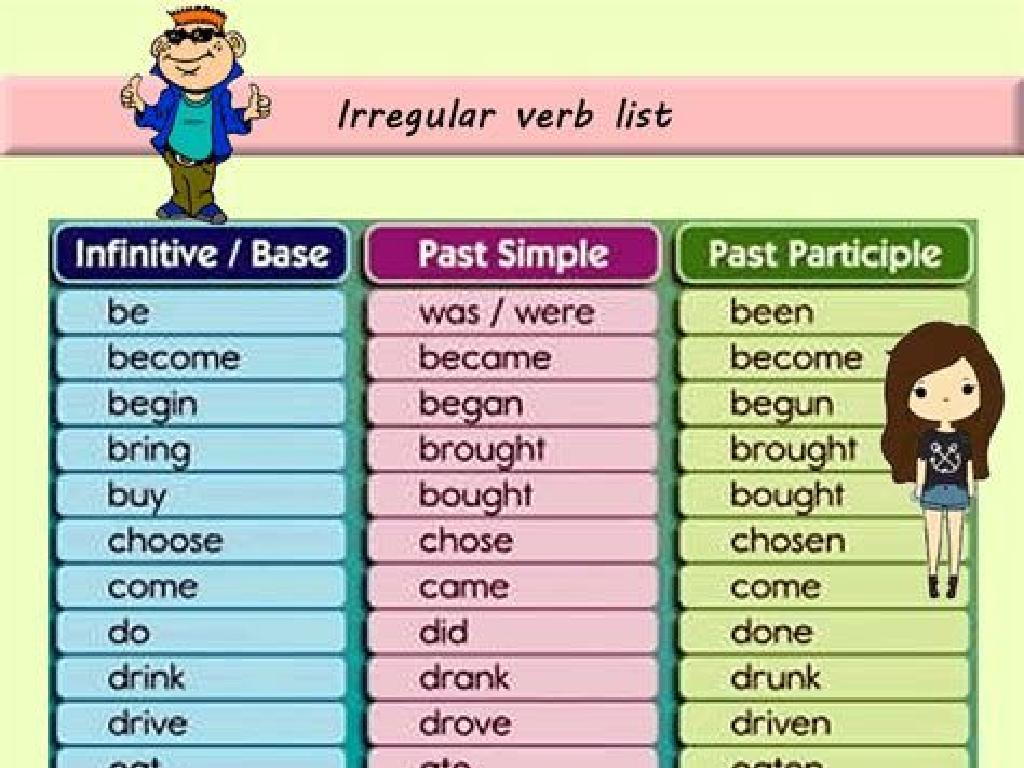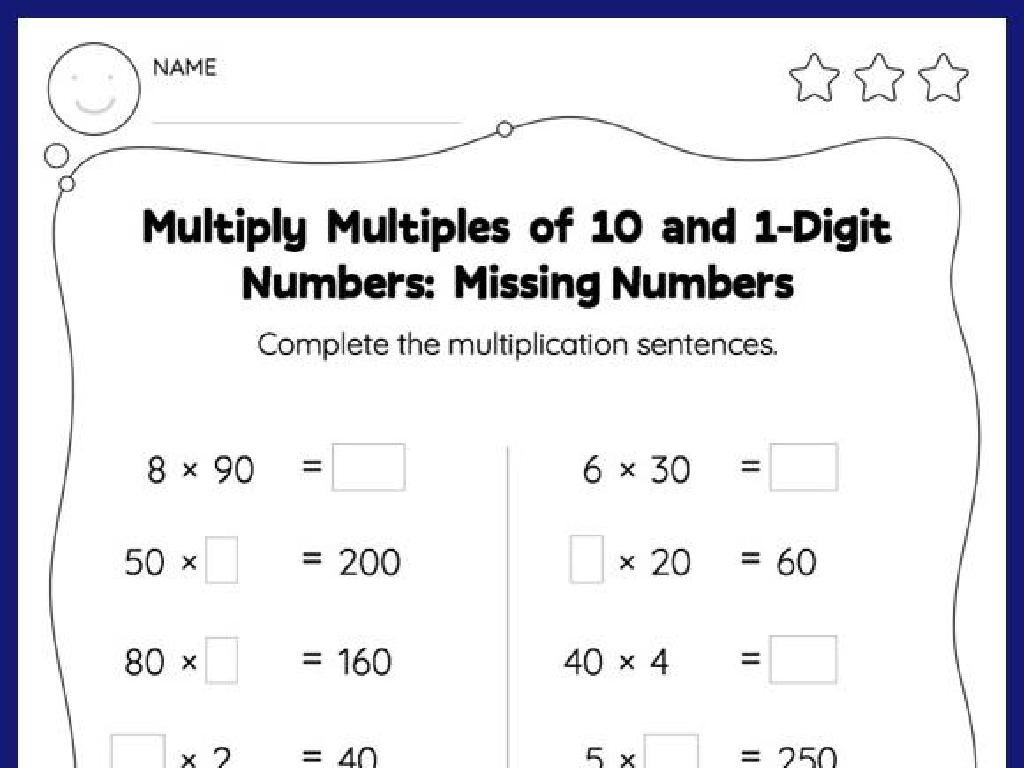Choose The Short O Word That Matches The Picture
Subject: Language arts
Grade: Kindergarten
Topic: Short O
Please LOG IN to download the presentation. Access is available to registered users only.
View More Content
Welcome to Short ‘o’ Sounds!
– Greeting and today’s topic intro
– What are vowels?
– Vowels are a, e, i, o, u. They make special sounds!
– The short ‘o’ sound
– The short ‘o’ sounds like ‘o’ in ‘pot’.
– Examples of short ‘o’
– Words like ‘dog’, ‘log’, ‘pot’, and ‘top’.
|
Begin the class by warmly greeting the students and introducing the topic of short ‘o’ sounds. Explain that vowels are special letters in our alphabet and they make unique sounds. Use simple examples like ‘apple’ for ‘a’, ‘elephant’ for ‘e’, ‘igloo’ for ‘i’, ‘octopus’ for ‘o’, and ‘umbrella’ for ‘u’ to illustrate the concept of vowels. Then, focus on the short ‘o’ sound by demonstrating the sound and providing examples that the children can easily recognize and relate to. Use common objects or animals that they are familiar with to reinforce the sound. Encourage the children to repeat the sound and the example words after you to practice. The goal is to help them identify the short ‘o’ sound in different words and understand how it is used in their language.
Listening to the Short ‘o’ Sound
– Play audio with short ‘o’ words
– Listen to words like ‘dog’, ‘log’, ‘frog’
– Repeat the sounds together
– Find the short ‘o’ in words
– Which words sound like ‘pot’? Let’s find them!
– Practice makes perfect
|
This slide is designed for a listening activity focused on the short ‘o’ sound. Start by playing audio clips of words that contain the short ‘o’ sound, such as ‘dog’, ‘log’, and ‘frog’. Encourage the students to listen carefully and then repeat the sounds after each word is played. This will help them to recognize and pronounce the short ‘o’ sound correctly. Next, ask the students to identify the short ‘o’ sound in each word they hear. You can turn this into a fun game by asking them to raise their hand or stand up every time they hear the short ‘o’ sound. The repetition and active participation will aid in reinforcing their understanding of the sound. Remember to praise their efforts to build confidence and make learning enjoyable.
Matching Words with Pictures: Short ‘o’ Sound
– View pictures with short ‘o’ sounds
– Look for words like ‘pot’, ‘dog’, ‘top’
– Match words to the right picture
– Use your knowledge of the short ‘o’ sound
– Interactive matching on the board
– Students can drag and drop on a smart board
– Celebrate correct matches together
– Clap and cheer to make learning fun
|
This slide is designed for an interactive class activity to help Kindergarten students recognize and match words with the short ‘o’ sound to corresponding pictures. Display various pictures and have words with the short ‘o’ sound ready for matching. Allow students to come up to the board and interact with the content by dragging and dropping words next to the correct images. Reinforce correct matches with positive reinforcement such as clapping or cheering, making the activity enjoyable and memorable. This will help students associate the sound with the visual representation, enhancing their phonetic skills and vocabulary.
Short ‘o’ Word Practice
– Practice with ‘o’ flashcards
– Look at the picture, say the word with short ‘o’
– Class says words together
– We will all say the words as a group
– Individual student practice
– I’ll pick friends to say the words one by one
– Listen and repeat after me
|
This slide is designed for a class activity focused on practicing the pronunciation of short ‘o’ words. Start by showing flashcards with pictures and words that have the short ‘o’ sound, such as ‘dog’, ‘log’, ‘pot’, and ‘fog’. Have the class say the words in unison to reinforce the sound. Then, to build individual confidence, ask specific students to say the words aloud. Finish by having the whole class listen and repeat each word after you. This activity will help students recognize and pronounce short ‘o’ words, an essential skill in their reading development. Possible variations of the activity could include a matching game where students match words to pictures, or a ‘find the word’ game where students pick out short ‘o’ words from a mixed list.
Finding the Short ‘o’ Sound
– Receive your worksheet with pictures
– Circle words with the short ‘o’ sound
– Words like ‘pot’, ‘dog’, ‘frog’, and ‘log’
– Match words to the correct pictures
– For example, circle ‘dog’ for a picture of a dog
– Ask for help if you need it
|
This slide is for a classroom activity focused on identifying the short ‘o’ sound in words. Distribute worksheets that have a mix of pictures and words to the students. The task for the students is to circle the words that contain the short ‘o’ sound and match them to the corresponding pictures. This activity helps in reinforcing their understanding of the short ‘o’ sound and its appearance in different words. As the students work on this activity, walk around the classroom to offer assistance. Be prepared with additional examples of words with the short ‘o’ sound to help students who may be struggling. Encourage students to say the words out loud to hear the short ‘o’ sound. After the activity, review the answers as a class to ensure understanding.
Short ‘o’ Word Game
– Introduction to the short ‘o’ game
– Split into small groups for the game
– Understand the game rules
– Each group takes turns matching words to pictures
– Play the game with help if needed
– Teachers will assist groups during the game
|
This slide introduces a fun and interactive game to help Kindergarten students reinforce their understanding of short ‘o’ words. Begin by explaining the purpose of the game and how it will help them learn. Divide the class into small groups to foster teamwork and ensure that each child is actively participating. Go over the rules clearly, demonstrating an example if possible, so that the students know what is expected. As they play, circulate around the room to offer assistance and encouragement. Possible activities could include matching words to pictures, ‘I Spy’ with short ‘o’ words, or a short ‘o’ word scavenger hunt. The goal is to make learning these words enjoyable and memorable.
Class Activity: Short ‘o’ Word Hunt
– Understand the word hunt rules
– Find hidden pictures in class
– Match pictures to short ‘o’ words
– For example, a picture of a pot matches the word ‘pot’
– Write down the short ‘o’ words
|
This activity is designed to help Kindergarten students recognize and learn words with the short ‘o’ sound. Begin by explaining the rules: pictures are hidden around the room, each depicting an object that has a short ‘o’ in its name, like ‘pot’, ‘dog’, or ‘log’. Students must search for these pictures and then write down the word that represents the object they found. This exercise will reinforce their understanding of the short ‘o’ sound and its usage in words. For the teacher: ensure that the pictures are age-appropriate and easily identifiable by the students. Prepare a list of possible words that students may find to assist them if they struggle with spelling. Encourage students to help each other and make the activity fun by perhaps adding a playful element, like ‘word detectives’.
Fun with Short ‘o’ Sounds: Review Time!
– Review today’s short ‘o’ words
– Let’s recall the words with the short ‘o’ sound we learned.
– Share your favorite short ‘o’ word
– Tell us which short ‘o’ word you liked the most and why.
– Listen for short ‘o’ sounds at home
– Can you hear the short ‘o’ sound around you? Maybe in ‘dog’ or ‘log’?
– Great job learning today!
|
As we conclude today’s lesson, go over the list of short ‘o’ words that the class has learned to reinforce their understanding. Encourage each student to participate by sharing the short ‘o’ word they enjoyed learning the most, which will help them feel more connected to the lesson. End the class on a high note by praising their efforts and suggesting that they listen for the short ‘o’ sound in their environment, such as at home or on the playground. This will help them apply what they’ve learned in class to the real world, reinforcing their phonemic awareness.






